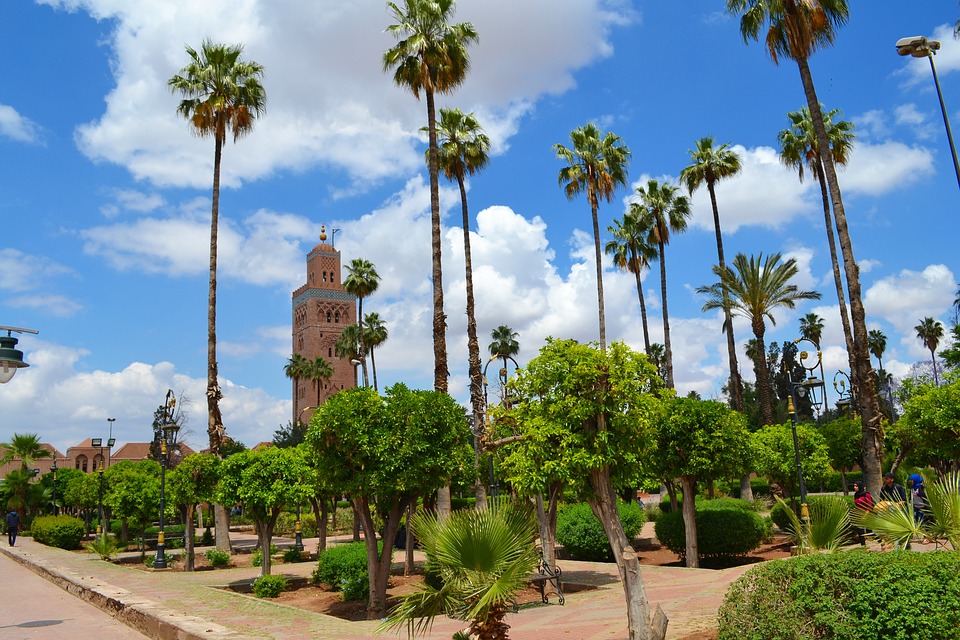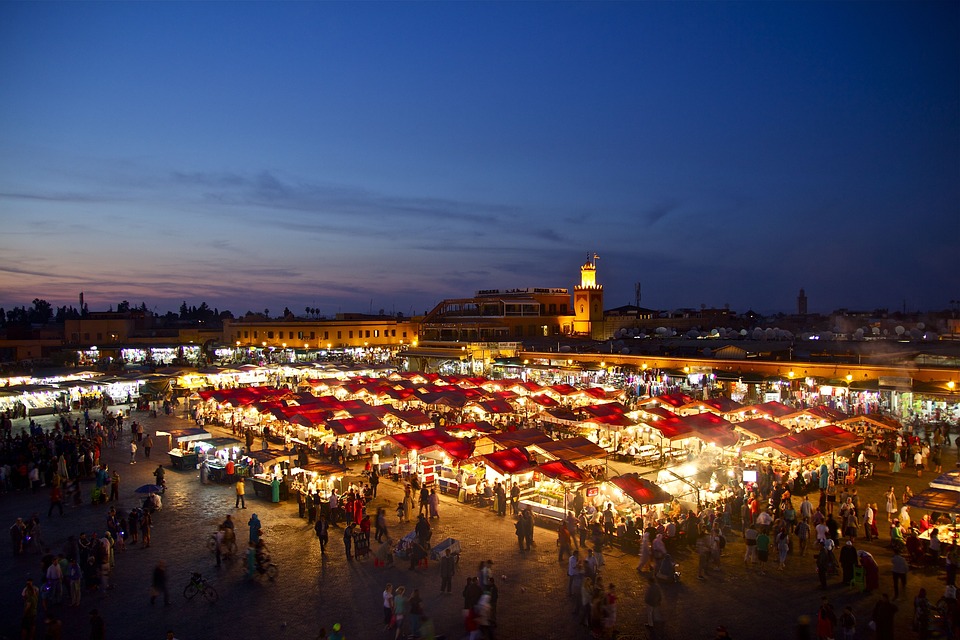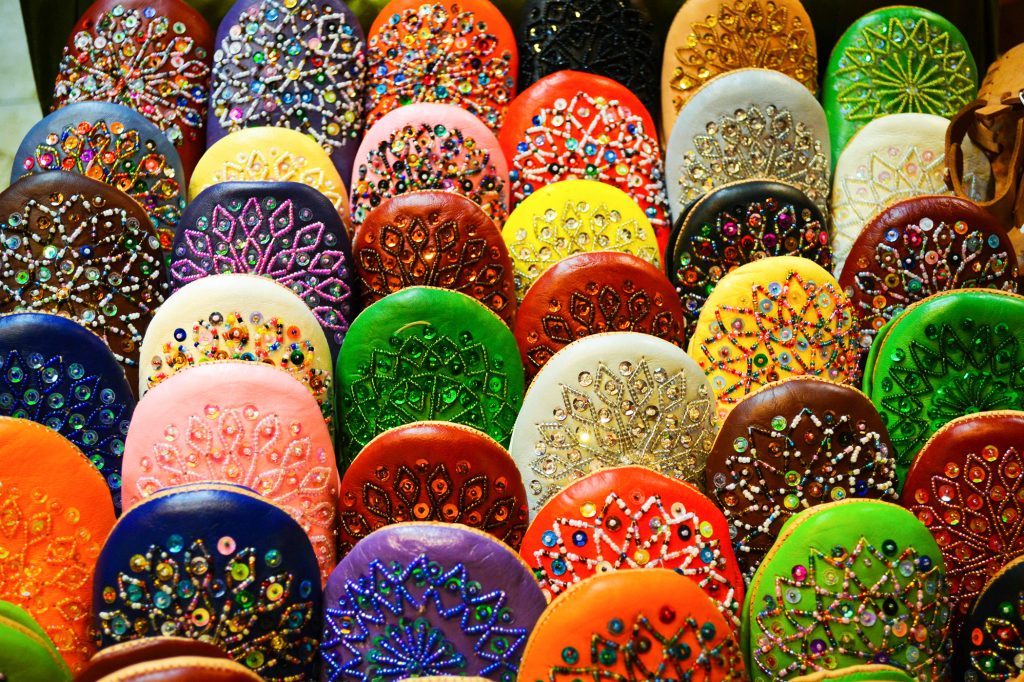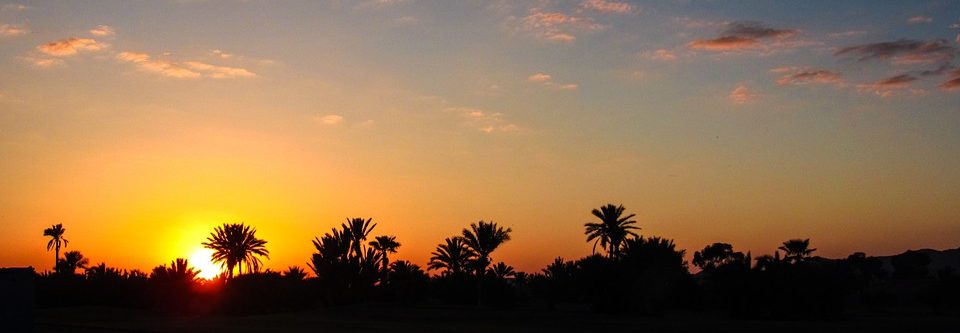About Marrakesh

HISTORY
The red royal city of Marrakech – speaks from Marrakech, in Moroccan sounds like Meraksj – with its ancient palaces and fairytale atmosphere is perhaps the most extraordinary city in Morocco. With a rich history. It is one of the four old royal cities, together with Rabat, Fez and Meknes. The former kings, Sultans they were called at the time, always chose a new city to rule their empire. That city was then defended and embellished with palaces and mosques. In the beginning of the ninth century, Morocco acquired its own identity under the dynasty of the Idrissians (786-920) who developed the Fez region. Marrakech was founded in the eleventh century by Yusuf Ibn Tachfin. Marrakech became a very important city in the sixteenth century during the empire of the Saadians. Sultan Ahmed el Mansour built the large Palais El Badi and large tombs in the adjacent garden. First for his mother, later for the rest of his family and of course for himself. From 1660 there will be a new dynasty, that of the Alawites. They are still in power in today’s Morocco. Moulay al-Rashid conquers the country and his successor Moulay Ismael makes Meknès the new capital. The Palais El Badi was destroyed. He did not dare with the tombs and the tombs of the Saadians. These were bricked in behind walls. And only after the first aerial photographs taken during French domination (1912-1956), they were rediscovered in 1917. In travel guides and on the internet you can find a lot about the history of Morocco.
MEDINA

The country of Morocco only became a unit when the French started to rule. They did not dare (happily) interfere in the narrow and angular alleys of the medina. The French built their own ‘ville nouvelle’ with wide boulevards and large buildings. In Marrakech this is the neighborhood ‘Guéliz’ along the wide Avenue Mohamed V. Here you can shop modern and hip and go out in European style. The prices are also at least as European. A nice exception is the fish restaurant Albahriya on the corner of the Boulevard Moulay Rachid and the Rue Mauretanie. Here you eat fish in the middle of local Moroccan families for a good price.
MARRAKECH – THE RED CITY
The medina of the old royal city is surrounded by centuries-old thick walls of loam. In Marrakech that earth is terracotta red; the city is also called ‘la rouge’. Sometimes time seems to have stood still within the city walls. Much is still here as in the past. It seems like a big jumble of alleys and streets. Formerly only accessible on foot, by donkey or by camel. Nowadays also with a bicycle or moped. Note: “balek, balek” means “on the side – freight – beware!”
CLAYED, FOOI AND NEGOTIATE
Morocco is a relatively poor country, even though a quick catch-up is being made. The difference between rich and poor is also very large. Tourism is important for many Moroccans as a source of income. With few alternative sources of income it seems as if every Moroccan wants to ‘earn’ as much as possible to every, in their eyes, rich tourist. Also, every purchase must be negotiated. This makes it hard for Westerners to get used to shopping in Marrakech. Do this, however, especially because you will find the most beautiful stuff. Just know that if a Moroccan trader asks where you come from and whether you are in Morocco for the first time, your answer will be taken into account in the price used to negotiate. Consider in advance what price you have for something and look carefully how much handicraft is put in the coveted souvenir. For a good quality handcrafted manual work must also be paid.
WALKING BY THE SOUKS

At Marrakech you should visit the Djemaa-el-Fnaa square and wander through the alleys behind the ‘souks’ (souk = market). Here you will find all kinds of small shops and artisans. Through the narrow streets – covered with reeds against the sun – you walk past wool and linen dicers, wood carvers, coppersmiths, leatherworkers, and even tanneries.
On the square itself there is a spectacle every night, 365 days a year, with musicians, acrobats, storytellers and everywhere food stalls. Every night they are rebuilt and broken down. During the day you hardly recognize the empty square. Then there are only the stalls with fresh orange juice with everywhere the same fixed, low price (4 dirham). Ask for orange juice without ice cream = ‘sans glace’ (pronounce: san ghelas) – also read “Food and drink” What is safe? “. Whatever you hear during the day are the snake charmers with their monotonous flute. And at the water carriers in their traditional clothing you can go for a glass of cool / fresh water. They also like to make some money by standing in the photo with tourists.

